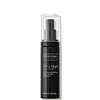What's inside
What's inside
 Key Ingredients
Key Ingredients

 Benefits
Benefits

 Concerns
Concerns

 Ingredients Side-by-side
Ingredients Side-by-side

Water
Skin ConditioningCaprylic/Capric Triglyceride
MaskingJojoba Esters
EmollientCetearyl Alcohol
EmollientCetyl Esters
EmollientPentylene Glycol
Skin ConditioningCetyl Palmitate
EmollientHelianthus Annuus Seed Oil Unsaponifiables
EmollientTetrahexyldecyl Ascorbate
AntioxidantLauryl Lactate
EmollientStearyl Alcohol
EmollientGlycerin
HumectantAlpha-Glucan Oligosaccharide
CleansingDimethicone
EmollientBakuchiol
AntimicrobialHordeum Distichon Extract
Skin ProtectingSantalum Album Extract
CleansingPhellodendron Amurense Bark Extract
Skin ConditioningDicetyl Phosphate
EmulsifyingCeteth-10 Phosphate
CleansingButylene Glycol
HumectantTocopherol
AntioxidantSqualane
EmollientUrsolic Acid
MaskingPseudoalteromonas Ferment Extract
HumectantSodium Lauroyl Lactylate
EmulsifyingHydrogenated Lecithin
EmulsifyingEthoxydiglycol
HumectantAstragalus Membranaceus Root Extract
EmollientSodium Hyaluronate
HumectantSilanetriol
Rhamnose
HumectantLycium Barbarum Fruit Extract
AstringentAcetyl Tetrapeptide-2
Skin ConditioningLecithin
EmollientCocos Nucifera Fruit Extract
EmollientRetinol
Skin ConditioningSodium Hydroxide
BufferingRosmarinus Officinalis Leaf Extract
AntimicrobialCeramide NP
Skin ConditioningSorbic Acid
PreservativePalmitoyl Hexapeptide-14
Skin ConditioningCeramide AP
Skin ConditioningPhytosphingosine
Skin ConditioningCholesterol
EmollientTocopheryl Acetate
AntioxidantCaprylyl Glycol
EmollientCeramide EOP
Skin ConditioningCarbomer
Emulsion StabilisingHydroxyethyl Acrylate/Sodium Acryloyldimethyl Taurate Copolymer
Emulsion StabilisingDisodium EDTA
Methylpropanediol
SolventUbiquinone
AntioxidantDipropylene Glycol
HumectantGlyceryl Caprylate
EmollientPropanediol
SolventChlorphenesin
AntimicrobialSodium Citrate
BufferingXanthan Gum
EmulsifyingPotassium Sorbate
PreservativeSodium Benzoate
MaskingBenzoic Acid
MaskingPhenoxyethanol
PreservativeAllyl Methacrylates Crosspolymer
Emulsion StabilisingCetyl Alcohol
EmollientPolysorbate 20
EmulsifyingBHT
AntioxidantSorbitan Isostearate
EmulsifyingPolysorbate 60
EmulsifyingEthylhexylglycerin
Skin ConditioningCitric Acid
BufferingPropyl Gallate
AntioxidantWater, Caprylic/Capric Triglyceride, Jojoba Esters, Cetearyl Alcohol, Cetyl Esters, Pentylene Glycol, Cetyl Palmitate, Helianthus Annuus Seed Oil Unsaponifiables, Tetrahexyldecyl Ascorbate, Lauryl Lactate, Stearyl Alcohol, Glycerin, Alpha-Glucan Oligosaccharide, Dimethicone, Bakuchiol, Hordeum Distichon Extract, Santalum Album Extract, Phellodendron Amurense Bark Extract, Dicetyl Phosphate, Ceteth-10 Phosphate, Butylene Glycol, Tocopherol, Squalane, Ursolic Acid, Pseudoalteromonas Ferment Extract, Sodium Lauroyl Lactylate, Hydrogenated Lecithin, Ethoxydiglycol, Astragalus Membranaceus Root Extract, Sodium Hyaluronate, Silanetriol, Rhamnose, Lycium Barbarum Fruit Extract, Acetyl Tetrapeptide-2, Lecithin, Cocos Nucifera Fruit Extract, Retinol, Sodium Hydroxide, Rosmarinus Officinalis Leaf Extract, Ceramide NP, Sorbic Acid, Palmitoyl Hexapeptide-14, Ceramide AP, Phytosphingosine, Cholesterol, Tocopheryl Acetate, Caprylyl Glycol, Ceramide EOP, Carbomer, Hydroxyethyl Acrylate/Sodium Acryloyldimethyl Taurate Copolymer, Disodium EDTA, Methylpropanediol, Ubiquinone, Dipropylene Glycol, Glyceryl Caprylate, Propanediol, Chlorphenesin, Sodium Citrate, Xanthan Gum, Potassium Sorbate, Sodium Benzoate, Benzoic Acid, Phenoxyethanol, Allyl Methacrylates Crosspolymer, Cetyl Alcohol, Polysorbate 20, BHT, Sorbitan Isostearate, Polysorbate 60, Ethylhexylglycerin, Citric Acid, Propyl Gallate
Water
Skin ConditioningGlycerin
HumectantPetrolatum
EmollientDistearyldimonium Chloride
Isopropyl Palmitate
EmollientCyclopentasiloxane
EmollientCetyl Alcohol
EmollientButyrospermum Parkii Butter
Skin ConditioningColloidal Oatmeal
AbsorbentOphiopogon Japonicus Root Extract
Skin ConditioningTocopheryl Acetate
AntioxidantRetinyl Palmitate
Skin ConditioningAscorbic Acid
AntioxidantBeta-Glucan
Skin ConditioningTetrapeptide-21
Skin ConditioningMyristoyl Pentapeptide-11
Skin ConditioningPolymethyl Methacrylate
Dipotassium Glycyrrhizate
HumectantMaltodextrin
AbsorbentBenzalkonium Chloride
AntimicrobialButylene Glycol
HumectantSodium Chloride
MaskingBenzyl Alcohol
PerfumingWater, Glycerin, Petrolatum, Distearyldimonium Chloride, Isopropyl Palmitate, Cyclopentasiloxane, Cetyl Alcohol, Butyrospermum Parkii Butter, Colloidal Oatmeal, Ophiopogon Japonicus Root Extract, Tocopheryl Acetate, Retinyl Palmitate, Ascorbic Acid, Beta-Glucan, Tetrapeptide-21, Myristoyl Pentapeptide-11, Polymethyl Methacrylate, Dipotassium Glycyrrhizate, Maltodextrin, Benzalkonium Chloride, Butylene Glycol, Sodium Chloride, Benzyl Alcohol
 Reviews
Reviews

Ingredients Explained
These ingredients are found in both products.
Ingredients higher up in an ingredient list are typically present in a larger amount.
Butylene Glycol (or BG) is used within cosmetic products for a few different reasons:
Overall, Butylene Glycol is a safe and well-rounded ingredient that works well with other ingredients.
Though this ingredient works well with most skin types, some people with sensitive skin may experience a reaction such as allergic rashes, closed comedones, or itchiness.
Learn more about Butylene GlycolCetyl Alcohol is a fatty alcohol. Fatty Alcohols are most often used as an emollient or to thicken a product.
Its main roles are:
Though it has "alcohol" in the name, it is not related to denatured alcohol or ethyl alcohol.
The FDA allows products labeled "alcohol-free" to have fatty alcohols.
Learn more about Cetyl AlcoholGlycerin is already naturally found in your skin. It helps moisturize and protect your skin.
A study from 2016 found glycerin to be more effective as a humectant than AHAs and hyaluronic acid.
As a humectant, it helps the skin stay hydrated by pulling moisture to your skin. The low molecular weight of glycerin allows it to pull moisture into the deeper layers of your skin.
Hydrated skin improves your skin barrier; Your skin barrier helps protect against irritants and bacteria.
Glycerin has also been found to have antimicrobial and antiviral properties. Due to these properties, glycerin is often used in wound and burn treatments.
In cosmetics, glycerin is usually derived from plants such as soybean or palm. However, it can also be sourced from animals, such as tallow or animal fat.
This ingredient is organic, colorless, odorless, and non-toxic.
Glycerin is the name for this ingredient in American English. British English uses Glycerol/Glycerine.
Learn more about GlycerinTocopheryl Acetate is AKA Vitamin E. It is an antioxidant and protects your skin from free radicals. Free radicals damage the skin by breaking down collagen.
One study found using Tocopheryl Acetate with Vitamin C decreased the number of sunburned cells.
Tocopheryl Acetate is commonly found in both skincare and dietary supplements.
Learn more about Tocopheryl AcetateWater. It's the most common cosmetic ingredient of all. You'll usually see it at the top of ingredient lists, meaning that it makes up the largest part of the product.
So why is it so popular? Water most often acts as a solvent - this means that it helps dissolve other ingredients into the formulation.
You'll also recognize water as that liquid we all need to stay alive. If you see this, drink a glass of water. Stay hydrated!
Learn more about Water